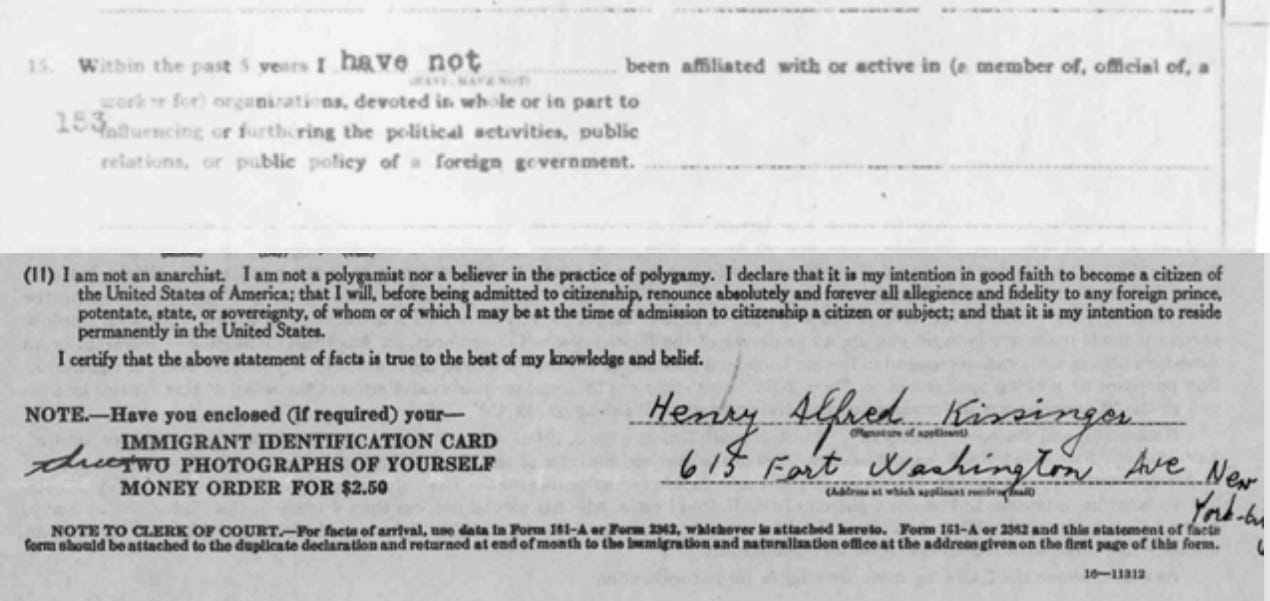What was in Henry Kissinger's immigration file?
Kissinger was an unremarkably Jewish-German refugee in the 1940s — and that's what makes his immigration file so interesting.
Ramadan karim!
Last week, The Intercept published my dispatch from the Israeli-Palestinian dustup in Teaneck, New Jersey. I also dived deeper into Teaneck history on this Substack, and mentioned that an upcoming Israeli real estate fair in Teaneck was expected to spark more protests. Those protests did happen this weekend, and I wrote about them for Reason Magazine.
Today, Reason also published my favorite kind of article: a Freedom of Information Act treasure trove. A few months ago, after Henry Kissinger died, I asked a few federal agencies for his file. U.S. Citizenship and Immigration Services was the first one to respond.
There’s no new historical details, but the files are a pretty intimate snapshot of Kissinger’s life at a time when he was powerless. He came to America as a teenage refugee fleeing Nazi Germany, became stateless a few months later, and only gained American citizenship after being drafted into the U.S. Army.

The files also include Kissinger’s sworn declarations that he is not an “anarchist,” a “polygamist,” or a foreign agent.
The polygamy question is a fun one, as you may know from my writing on Ebrahim Yazdi, the Iranian-American pharmacologist who briefly became Iran’s foreign minister. Instead of simply answering that he wasn’t a polygamist, Yazdi wrote a long-winded essay about Islamic marriage.
Sadly, Kissinger’s file did not include any unexpected details like that. In the U.S. government’s eyes, he was an unremarkable Jewish-German refugee who worked at a brush factory. Kissinger’s intellect only started to shine through when he was assigned to the U.S. Army Counterintelligence Corps.
That is really the cool thing about immigration files. You get to see historical figures before they were historical figures, when they were just people. And you get to see them through the eyes of a bureaucrat who has no idea that history is about to unfold.
You can read the entire file at Reason.



